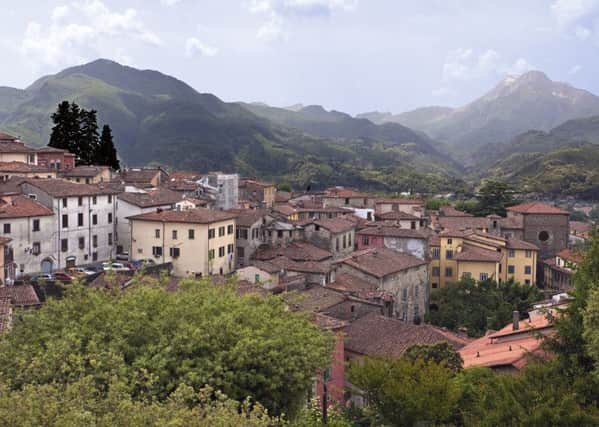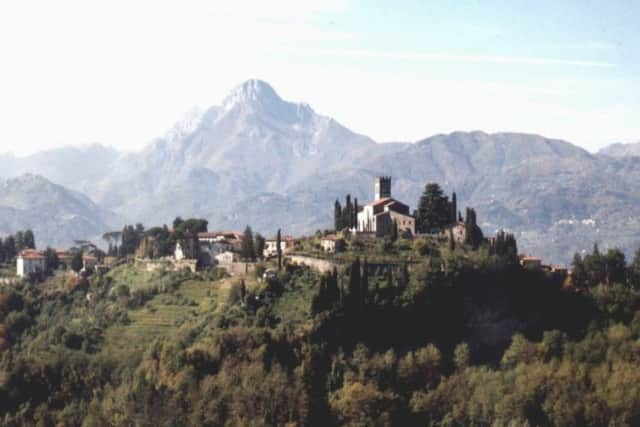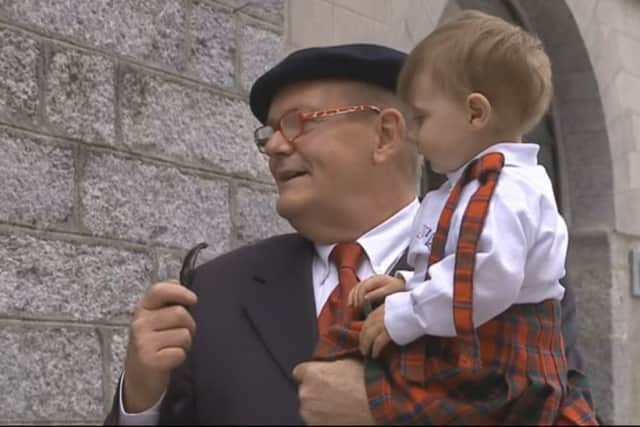Welcome to Barga: the most Scottish town in Italy


High in the Tuscan hills, nestled below the snowy peaks of the Apuan Alps, lies the beautiful 10th century walled town of Barga.
At first glance, its winding streets and red-tiled villas give it the look of many towns typical of the region
Advertisement
Hide AdHowever, its the locals, and their celebration of a unique connection that make the place a little bit different from your typical Italian community.


While walking around the town, visiting its bars or even the local B and B, you may be surprised to hear a Glaswegian accent or two.
In fact, it’s not unusual to find the locals, who were perhaps speaking Italian a moment ago to suddenly break into English with an inflection that hints at a west coast of Scotland upbringing.
The town’s connection with Scotland isn’t as superficial, or as simple, as just the hills and mountainous terrain surrounding it being reminiscent of the Highlands, or the fact that it is twinned with Prestonpans, Cockenzie, Port Seton & Longiddry in East Lothian - no the relationship between the Barga and Scotland runs much deeper.
To understand it, we have to go back to the turn of the 19th century, where an ailing Tuscan economy, suffering under the decline of the silk industry, forced young, impoverished Tuscans to emigrate in search of work to support their families.


A great many chose to go to America and the economic opportunities that awaited them there, with scores of them choosing to stay in Scotland and the UK instead of continuing their journey on to the United States, Canada and South America.
Advertisement
Hide AdOthers it is said, paid what they could afford for transport across the Atlantic but were duped into believing they had arrived at the ports of Boston or New York, only to discover they were actually in Portobello or Port Glasgow with no more money to go any further.
This first wave of Italian immigrants took to this new challenge of integration with the depth of endeavour only the desperate could know and many tried to make money as street traders selling plaster religious icons to make ends meet.
Advertisement
Hide AdHowever it was those who discovered the Scots sweet tooth and used their skills to make gelato that really began to see success. Coupling their ice-cream with fish and chips, a dish made with the two ingredients most abundant in Scotland, they soon began to integrate into Scotland’s communities by opening cafés and restaurants.


Those more affluent pioneers paved the way for others to follow and soon, up and down the west coast, Scotland’s villages and towns were benefitting from the endeavours of these creative incomers.
Over the generations many Scots-Italians made the return trips to Tuscany to visit relatives and family in towns like Barga and many stayed, cementing the connection between the two and bringing a little touch of tartan to this corner of Italy.
Nowadays, 60 per cent of the town’s 10,000 residents can claim to have Scottish relations and every year to celebrate this association, the town hosts its very own Sagra del Pesce e Patate or festival of Fish and Chips, which runs over three weeks in July and August.
You can even get a full Scottish breakfast in the local pub, Bar Del Paologas and up until last year, when Riccardo, owner of local Trattoria Riccardo’s, retired, the town held an annual Burns supper in the eatery, to the sounds of bagpipes and recitals of Burns poetry.


The town also regularly plays hosts to Scottish weddings and a newer event taking place in September honours the closeness of the two communities, ‘Barga’s Scottish Weekend’ runs over a few days in September with many events dedicated to Scottish culture.
Advertisement
Hide Ad“Many people from Barga live in Scotland, it is the history of our people, we went to Scotland for work,” explained Mayor Umberto Sereni told the BBC in an interview.
“Now we can see many people from Scotland in Barga.
“We are very proud to be the most Scottish town in Italy. Any Scotsman who comes to Barga should feel at home - like in a little Scotland.”
Advertisement
Hide AdThe town, much like the west coast of Scotland, is also sports mad and it is home to one of only two Celtic supporters’ clubs in the country and you can even find a Celtic calender and a Rangers newspaper in the town’s Scottish museum.
The local football stadium is also named after the only Scot to play football for Italy, Giovanni “Johnny” Moscardini, who is arguably one of the town’s most famous sons.
Born in Falkirk in 1897, son of a fish-and-chip-shop-owning emigrant, Johnny returned to his father’s homeland following the end of the First World War where he earned a name for himself starring for Serie A side Lucchese.
He drew the attention of the national coach and became one of the first Oriundi - a term that refers to players born overseas who represent Italy thanks to their ancestry - to play for the Azzuri.
Johnny remains the only player from Scotland to star for the Italian team, playing nine times and netting seven goals.
He returned to Scotland to open his own café in Prestwick and remained there until he died in 1985 at the age of 88.
Advertisement
Hide AdThe town can also lay claim to some of Scotland’s biggest music stars as both Paolo Nutini (grandparents) and Nicola Benedetti’s (Father) hailed from there.
Scots Artist John Bellany, who fell in love with the place when he first visited, lived there and even set up a small art gallery.
Advertisement
Hide AdHamish Moore, one of Scotland’s most famous bagpipe makers, was inspired by John to visit, and is now relaunching a two week summer school on Scottish culture, including traditional music and dance, after a gap of five years.
Remarkably, the town faces a challenge for it’s title of the most Scottish place in Italy from a small village north of Milan. Residents of Gurro, which lies close to the Swiss border, claim to be descended from a group of Highland soldiers who made their home in the Piedmont region, almost 500 years ago.
Saltires are flown around the town and many of the locals still wear kilts, with each of the village’s 220 or so residents claiming to be a direct descendant of the Highland mercenaries, who having lost at the Battle of Pavia in 1525, hid in the village and stayed there, building homes, instead of making the long march back to France.
The townsfolk say their surnames which include the likes of Gibi and Donaldi, are just derivatives of traditional Scottish names like Gibbs and MacDonald.
Recent studies by a Swiss university also found that the local dialect contains around 800 Gaelic words.
The town even holds festivities each July celebrating their Scottish roots with pipers and tartan aplenty.
•
DOWNLOAD THE SCOTSMAN APP ON ITUNES OR GOOGLE PLAY